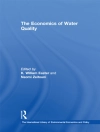Formerly published by Chicago Business Press, now published by Sage
Focusing on knowledge acquisition and skill development,
Human Resource Management: An Applied Approach is designed to prepare future managers and non-managers alike to effectively utilize human resource management strategies to advance their own careers while supporting the growth and development of those they manage. Author Jean M. Phillips encourages students to take action and create a lasting impact in the field of HRM that goes beyond theoretical learning.
The
Fourth Edition features new end-of-chapter exercises, company examples throughout the book, and a new section called
Using This Knowledge at the end of each chapter, providing additional support for applying the topics covered. Through case studies, videos, and exercises, students will develop their personal skills and gain practical experience in applying various HR concepts, enabling them to become better managers and more effective leaders.
Зміст
Preface
Acknowledgments
About the Author
Part One: The Importance and Context of Human Resource Management
1 Strategic Human Resource Management
What Is HRM?
What Does HRM Do?
How Does HRM Influence Organizational Perfromance?
The Role of HRM in Executing Business Strategy
Who Is Responsible for HRM?
Current Issues in HRM
Why Is HRM Important to Your Career?
2 The Role of Human Resource Management in Business
Why Is Organizational Culture Important?
What Is the Role of HRM in High-Performance Work Systems?
The Role of HRM in Corporate Ethics and Social Responsibility
How Does HRM Support Organizational Change?
Cultural Differences and Global HRM
HRM Metrics
3 Diversity and the Legal Context of HRM
The Role of HRM in Risk Managment
The Importance of Employment Laws
The Importance of Diversity and Inclusion to Business Performance
Laws and Definitions
Major Federal Employment Laws
Types of Employment Lawsuits
Enforcement Agencies
Legal Compliance Obstacles
Part Two: Planning and Staffing
4 Analyzing Work and Human Resource Planning
The Strategic Planning Process
Forecasting Labor Demand
Forecasting Labor Supply
Addressing Gaps Between the Firm′s Labor Supply and Labor Demand Forecasts
Job Design
Job Analysis
Organizational Structure
Workflow Analysis
5 Sourcing and Recruiting
Types of Job Seekers
Internal Recruiting
External Recruiting Sources
Recruiting
Current Trends in Sourcing and Recruiting
Recruiting Metrics
Applicant Attraction Strategies
6 Selection and Hiring
Assessment Goals
Assessment Methods
Making the Job Offer
The Employment Contract
Part Three: Training and Development
7 Training and Development
Developing a Competitive Advantage Through Effective Training
Training in Ethics, Global Leadership, and Diversity
Orientation and Socialization
8 Performance Management
Why Is Performance Managment Important?
Steps in Performance Management Process
Performance Measurement Methods
Performance Ranking Methods
Improving Performance Through Feedback and Rewards
Employee Improvement and Development Plans
Performance Managment Obstacles
Part Four: Managing Total Rewards
9 Base Compensation
What Is Compensation?
What Influences Direct Financial Compensation?
Evaluating the Worth of a Job
Compensation Issues
Compensation Laws and Regulations
10 Incentives
Designing Incentive Plans
Individual Incentive Plans
Group, Organizational, and Special Incentive Plans
Managing Incentive Systems
11 Benefits
The Purpose and Types of Benefits
Communicating Benefits Information
Managing Benefits
Part Five: Managing the Work Environment and Increasing Employee Engagement
12 Creating a Safe and Healthy Work Environment
Employee Safety
The Occupational Safety and Health Administration (OSHA)
Employee Wellness
Creating Sustainable Performance
Security Issues
13 Unionization and Creating Positive Employee-Management Relations
Labor Relations and Unionizing
Collective Bargaining
Strategic Labor Relations
How Unions Impact Human Resource Managment
14 Managing Engagement and Turnover
Employee Engagement and Organizational Commitment
Turnover and Involuntary Employee Separations
Employee Retention
Glossary
Notes
Index
Про автора
Jean Phillips is a professor of Human Resource Management in the School of Labor and Employment Relations at Penn State University. She earned her Ph D from Michigan State University in Business Management and Organizational Behavior. Her interests focus on recruitment, staffing, and the processes that lead to employee and organizational success. Dr. Phillips was among the top 5 percent of published authors in Journal of Applied Psychology and Personnel Psychology during the 1990s, and she received the 2004 Cummings Scholar Award from the Organizational Behavior Division of the Academy of Management. She is also a Fellow of the Society for Industrial and Organizational Psychology. Dr. Phillips has published more than fifty research articles, chapters, and books, including Strategic Staffing (3e, 2014), Organizational Behavior (12e, 2016), Human Resource Management (2013), Managing Now (2008), and the five-book Staffing Strategically (2012) series for the Society for Human Resource Management (SHRM). She was also the founding coeditor of the Organizational Behavior/Human Resource Management series for Business Expert Press. Her applied work includes leveraging employee surveys to enhance strategic execution and business performance, developing leadership and teamwork skills, and creating and evaluating strategic recruitment and staffing programs. She has taught online and traditional courses in Human Resource Management and Organizational behavior in the United States, Iceland, and Singapore.












